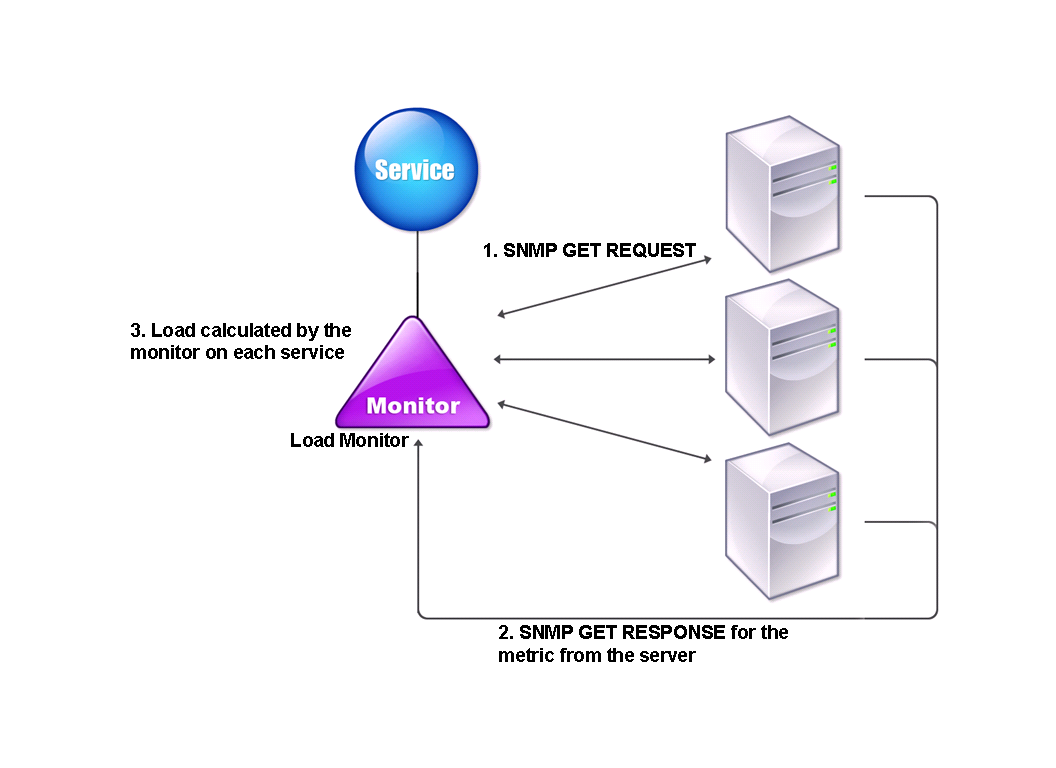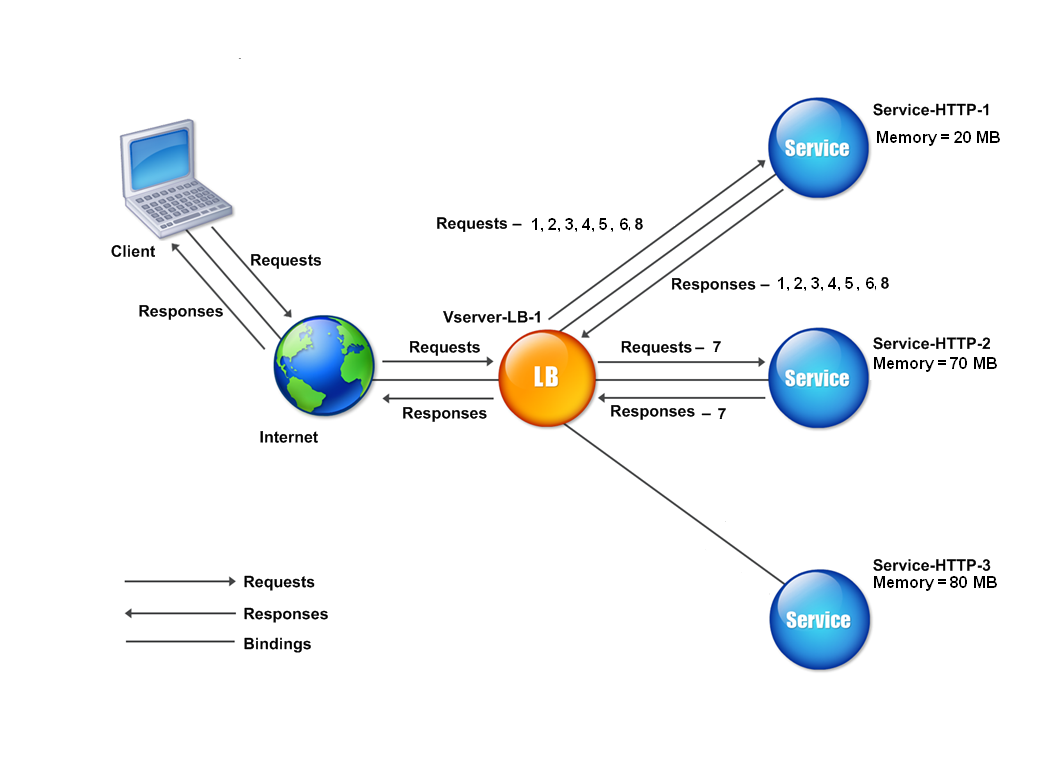-
Getting Started with NetScaler
-
Solutions for Telecom Service Providers
-
Load Balance Control-Plane Traffic that is based on Diameter, SIP, and SMPP Protocols
-
Provide Subscriber Load Distribution Using GSLB Across Core-Networks of a Telecom Service Provider
-
Authentication, authorization, and auditing application traffic
-
Basic components of authentication, authorization, and auditing configuration
-
Web Application Firewall protection for VPN virtual servers and authentication virtual servers
-
On-premises NetScaler Gateway as an identity provider to Citrix Cloud™
-
Authentication, authorization, and auditing configuration for commonly used protocols
-
Troubleshoot authentication and authorization related issues
-
-
-
-
-
-
Persistence and persistent connections
-
Advanced load balancing settings
-
Gradually stepping up the load on a new service with virtual server–level slow start
-
Protect applications on protected servers against traffic surges
-
Retrieve location details from user IP address using geolocation database
-
Use source IP address of the client when connecting to the server
-
Use client source IP address for backend communication in a v4-v6 load balancing configuration
-
Set a limit on number of requests per connection to the server
-
Configure automatic state transition based on percentage health of bound services
-
-
Use case 2: Configure rule based persistence based on a name-value pair in a TCP byte stream
-
Use case 3: Configure load balancing in direct server return mode
-
Use case 6: Configure load balancing in DSR mode for IPv6 networks by using the TOS field
-
Use case 7: Configure load balancing in DSR mode by using IP Over IP
-
Use case 10: Load balancing of intrusion detection system servers
-
Use case 11: Isolating network traffic using listen policies
-
Use case 12: Configure Citrix Virtual Desktops for load balancing
-
Use case 13: Configure Citrix Virtual Apps and Desktops for load balancing
-
Use case 14: ShareFile wizard for load balancing Citrix ShareFile
-
Use case 15: Configure layer 4 load balancing on the NetScaler appliance
-
-
-
-
Authentication and authorization for System Users
-
-
Configuring a CloudBridge Connector Tunnel between two Datacenters
-
Configuring CloudBridge Connector between Datacenter and AWS Cloud
-
Configuring a CloudBridge Connector Tunnel Between a Datacenter and Azure Cloud
-
Configuring CloudBridge Connector Tunnel between Datacenter and SoftLayer Enterprise Cloud
-
Configuring a CloudBridge Connector Tunnel Between a NetScaler Appliance and Cisco IOS Device
-
CloudBridge Connector Tunnel Diagnostics and Troubleshooting
This content has been machine translated dynamically.
Dieser Inhalt ist eine maschinelle Übersetzung, die dynamisch erstellt wurde. (Haftungsausschluss)
Cet article a été traduit automatiquement de manière dynamique. (Clause de non responsabilité)
Este artículo lo ha traducido una máquina de forma dinámica. (Aviso legal)
此内容已经过机器动态翻译。 放弃
このコンテンツは動的に機械翻訳されています。免責事項
이 콘텐츠는 동적으로 기계 번역되었습니다. 책임 부인
Este texto foi traduzido automaticamente. (Aviso legal)
Questo contenuto è stato tradotto dinamicamente con traduzione automatica.(Esclusione di responsabilità))
This article has been machine translated.
Dieser Artikel wurde maschinell übersetzt. (Haftungsausschluss)
Ce article a été traduit automatiquement. (Clause de non responsabilité)
Este artículo ha sido traducido automáticamente. (Aviso legal)
この記事は機械翻訳されています.免責事項
이 기사는 기계 번역되었습니다.책임 부인
Este artigo foi traduzido automaticamente.(Aviso legal)
这篇文章已经过机器翻译.放弃
Questo articolo è stato tradotto automaticamente.(Esclusione di responsabilità))
Translation failed!
Custom load method
Custom load balancing is performed on server parameters such as CPU usage, memory, and response time. When using the custom load method, the NetScaler appliance usually selects a service that is not handling any active transactions. If all the services in the load balancing setup are handling active transactions, the appliance selects the service with the smallest load. A special type of monitor, known as a load monitor, calculates the load on each service in the network. The load monitors do not mark the state of a service, but they do take services out of the load balancing decision when those services are not UP.
For more information about load monitors, see Understanding Load Monitors. The following diagram illustrates how a load monitor operates.
Figure 1. How Load Monitors Operate

The load monitor uses SNMP probes to calculate the load on each service by sending an SNMP GET request to the service. This request contains one or more object IDs (OIDs). The service responds with an SNMP GET response, with metrics corresponding to the SNMP OIDs. The load monitor uses the response metrics to calculate the load on the service.
The load monitor calculates the load on a service by using the following parameters:
- Metrics values retrieved through SNMP probes that exist as tables in the NetScaler appliance.
- Threshold value set for each metric.
- Weight assigned to each metric.
For example, consider three services, Service-HTTP-1, Service-HTTP-2, and Service-HTTP-3.
- Service-HTTP-1 is using 20 MB of memory.
- Service-HTTP-2 is using 70 MB of memory.
- Service-HTTP-3 is using 80 MB of memory.
The load balanced servers can export metrics such as CPU and memory usage to the services, which can in turn provide them to the load monitor. The load monitor sends an SNMP GET request containing the OIDs 1.3.6.1.4.1.5951.4.1.1.41.1.5, 1.3.6.1.4.1.5951.4.1.1.41.1.4, and 1.3.6.1.4.1.5951.4.1.1.41.1.3 to the services. SNMP OIDs of type STRING are not supported, because you cannot calculate the load by using a STRING OID. Loads can be calculated by using other data types, such as INT and gauge32. The three services respond to the request. The NetScaler appliance compares the exported metrics, and then selects Service-HTTP-1 because it has more available memory. The following diagram illustrates this process.
Figure 2. How the Custom Load Method Works

If each request uses 10 MB memory, the NetScaler appliance delivers requests as follows:
- Service-HTTP-1 receives the first, second, third, fourth, and fifth requests, because this service has the lowest N value.
- Service-HTTP-1 and Service-HTTP-2 now have the same load, so the virtual server reverts to the round robin method for these servers. Therefore, Service-HTTP-2 receives the sixth request, and Service-HTTP-1 receives the seventh request.
- Since Service-HTTP-1, Service-HTTP-2, and Service-HTTP-3 all now have the same load, the virtual server reverts to the round robin method for Service-HTTP-3 as well. Therefore, Service-HTTP-3 receives the eighth request.
The following table summarizes how N is calculated.
| Request received | Service selected | Current N Value (Number of Active Transactions) | Remarks |
|---|---|---|---|
| Request-1 | Service-HTTP-1; (N = 20) | N = 30 | Service-HTTP-3 has the lowest N value. |
| Request-2 | Service-HTTP-1; (N = 30) | N = 40 | - |
| Request-3 | Service-HTTP-1; (N = 40) | N = 50 | - |
| Request-4 | Service-HTTP-1; (N = 50) | N = 60 | - |
| Request-5 | Service-HTTP-1; (N = 60) | N = 70 | - |
| Request-6 | Service-HTTP-1; (N = 70) | N = 80 | Service-HTTP-2 and Service-HTTP-3 have the same N values. |
| Request-7 | Service-HTTP-2; (N = 70) | N = 80 | Service-HTTP-3 have the same N values. |
| Request-8 | Service-HTTP-1; (N = 80) | N = 90 | Service-HTTP-1, Service-HTTP-2, and Service-HTTP-3 have the same N values. |
If different weights are assigned to the services, the custom load algorithm considers both the load on each service and the weight assigned to each service. It selects a service by using the value (Nw) in the following expression:
Nw = (N) * (10000 / weight)
As in the preceding example, suppose Service-HTTP-1 is assigned a weight of 4, Service-HTTP-2 is assigned a weight of 3, and Service-HTTP-3 is assigned a weight of 2. If each request uses 10 MB memory, the NetScaler appliance delivers requests as follows:
- Service-HTTP-1 receives the first, second, third, fourth, fifth, sixth, seventh, and eighth requests, because this service has the lowest Nw value.
- Service-HTTP-2 receives the ninth request, because this service has the lowest Nw value.
Service-HTTP-3 has the highest Nw value, and is therefore not considered for load balancing.
The following table summarizes how Nw is calculated.
| Request received | Service selected | Current Nw Value (Number of Active Transactions) * (10000 / Weight) | Remarks |
|---|---|---|---|
| Request-1 | Service-HTTP-1; (Nw = 50000) | Nw = 75000 | Service-HTTP-1 has the lowest Nw value. |
| Request-2 | Service-HTTP-1; (Nw = 5000) | Nw = 100000 | - |
| Request-3 | Service-HTTP-1; (Nw = 15000) | Nw = 125000 | - |
| Request-4 | Service-HTTP-1; (Nw = 20000) | Nw = 150000 | - |
| Request-5 | Service-HTTP-1; (Nw = 23333.34) | Nw = 175000 | - |
| Request-6 | Service-HTTP-1; (Nw = 25000) | Nw = 200000 | - |
| Request-7 | Service-HTTP-1; (Nw = 23333.34) | Nw = 225000 | - |
| Request-8 | Service-HTTP-1; (Nw = 25000) | Nw = 250000 | |
| Request-9 | Service-HTTP-2; (Nw = 233333.34) | Nw = 266666.67 | Service-HTTP-2 has the lowest Nw value. |
Service-HTTP-1 is selected for load balancing when it completes its active transactions or when the Nw value of other services (Service-HTTP-2 and Service-HTTP-3) is equal to 400,000.
The following diagram illustrates how the NetScaler appliance uses the custom load method when weights are assigned.
Figure 3. How the Custom Load Method Works When Weights Are Assigned

To configure the custom load method, see Configuring a Load Balancing Method that Does Not Include a Policy.
Share
Share
In this article
This Preview product documentation is Cloud Software Group Confidential.
You agree to hold this documentation confidential pursuant to the terms of your Cloud Software Group Beta/Tech Preview Agreement.
The development, release and timing of any features or functionality described in the Preview documentation remains at our sole discretion and are subject to change without notice or consultation.
The documentation is for informational purposes only and is not a commitment, promise or legal obligation to deliver any material, code or functionality and should not be relied upon in making Cloud Software Group product purchase decisions.
If you do not agree, select I DO NOT AGREE to exit.